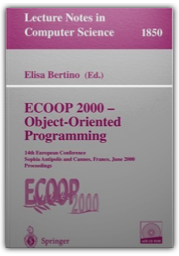
This book constitutes the refereed proceedings of the 14th European Conference on Object-Oriented programming, ECOOP 2000, held in Sophia, Antipolis and Cannes, France, in June 2000. The book also contains a CD-ROM providing digitized versions of all previous ECOOP conference proceedings and related indices.The 20 revised full papers presented in the book together with 3 invited papers were carefully reviewed and selected from a total of 109 submissions. The book is divided into topical sections on UML, type theory, object relations, cooperation and distribution, Java run time, optimization, and tools. 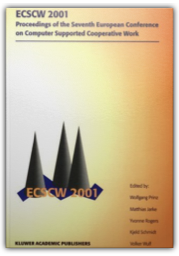
The emergence and widespread use of personal computers and network technologies has seen the development of interest in the use of computers to support cooperative work. This volume presents the proceedings of the seventh European conference on Computer Supported Cooperative Work (CSCW). This is a multidisciplinary area which embraces both the development of new technologies and an understanding of the grounding of CSCW technology in organizational practices. These proceedings contain a collection of papers that encompass activities in the field, including distributed virtual environments, new models and architectures for groupware systems, studies of communication and coordination among mobile actors, studies of cooperative work in heterogeneous settings, studies of groupware systems in use in real-world settings, and theories and techniques to support the development of cooperative applications. The papers present emerging technologies alongside new methods and approaches to the development of this important class of applications. The work in this volume represents the best of the current research and practice within CSCW. The collection of papers presented here will appeal to both researchers and practitioners alike as they combine an understanding of the nature of work with the possibility offered by new technologies. 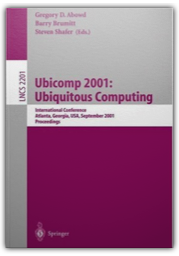
This book constitutes the refereed proceedings of the Third International Conference on Ubiquitous Computing, Ubicomp 2001, held in Atlanta, GA, USA in September/October 2001. The 14 revised full papers and 15 revised technical notes were carefully selected during a highly competitive reviewing process from a total of 160 submissions (90 paper submissions and 70 technical notes submissions). All current aspects of research and development in the booming area of ubiquitous computing are addressed. The book offers topical sections on location awareness, tools and infrastructure, applications for groups, applications and design spaces, research challenges and novel input, and output. 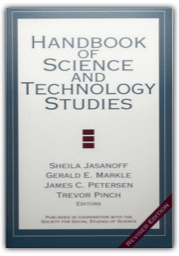
"This volume represents the social constructivist turn of the field. It is evident that social constructivism made a major impact on the field during the 1970s and 1980s. The diverse papers included here highlight the role of ethnography in STS. In addition, we are exposed to new perspectives of the multicultural and gendered nature of knowledge production." 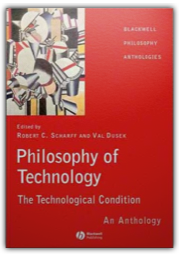
This anthology brings together, for the first time, a collection of both seminal historical and contemporary essays on the nature of technology and its relation to humanity. Its selections not only situate technology in the familiar context of ethical, political, aesthetic, and engineering concerns, but also thoroughly examine historical, metaphysical, and epistemological issues.The volume begins with historical readings on knowledge and its applications that have laid the foundation for contemporary writings on the philosophy of technology. Contemporary essays then critically assess previous assumptions about science and discuss the relation between science and technology and philosophy's treatment of both. The second half of the volume focuses on Heidegger's writings on technology, on the relationship between technology and the natural world, and on the issues that arise as technology becomes an integral part of our society.Philosophy of Technology includes, beyond the commonly anthologized figures, selections from European writers often not available in English-language collections. It is a valuable resource for anyone who wishes to explore the technological condition. |
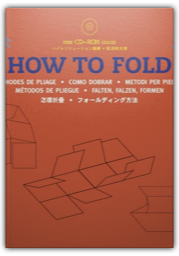
Packaging is an important factor in any retail environment and a key element in most marketing strategies. Consumers react immediately to package shapes, and are influenced by them when making buying decisions. Different product categories are often easy to recognize by their characteristic form, for example chocolate boxes or milk cartons. On the other hand, a manufacturer of an exclusive product, such as jewellery or perfume, may deliberately choose an unusual, eye-catching form. How to Fold and Folding Patterns for Display and Publicity are unique step-by-step manuals, containing hundreds of great folding ideas and ready-to-use designs. These books are essential tools for anyone involved in the fields of graphic and industrial design, advertising, and printing. All patterns are stored in eps vector format on the enclosed CD-ROMs. They may be used freely to create new designs, and can be scaled and modified to suit any conceivable purpose. 
This book documents the satellite events run around the 14th European Conference on Object-Oriented Programming, ECOOP 2000 in Cannes and Sophia Antipolis in June 2000. The book presents 18 high-quality value-adding workshop reports, one panel transcription, and 15 posters. All in all, the book offers a comprehensive and thought-provoking snapshot of the current research in object-orientation. The wealth of information provided spans the whole range of object technology, ranging from theoretical and foundational issues to applications in various domains. 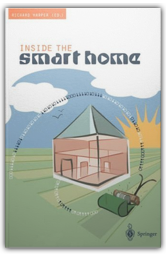
"A fascinating insight into potentially one of the most exciting developments that affects each and every one of us as we move forward into the 21st Century. This book indicates the direction industry must take if we are to achieve the dream of living in a Smart Home." Steve Hearnden, Mobile Telecommunications Consultant, UK 
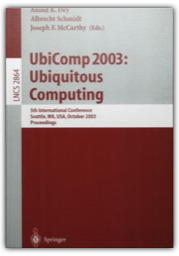
This book constitutes the refereed proceedings of the 5th International Conference on Ubiquitous Computing, UbiComp 2003, held in Seattle, WA, USA in Ocotber 2003. 
Nineteenth-century Britain saw an explosion of periodical literature, with the publication of over 100,000 different magazines and newspapers for a growing market of eager readers. The Victorian periodical press became an important medium for the dissemination of scientific ideas. Every major scientific advance in the nineteenth century was trumpeted and analyzed in periodicals ranging from intellectual quarterlies such as the Edinburgh Reviewto popular weeklies like the Mirror of Literature, from religious periodicals such as the Evangelical Magazineto the atheistic Oracle of Reason. Scientific articles appeared side by side with the latest fiction or political reporting, while articles on nonscientific topics and serialized novels invoked scientific theories or used analogies drawn from science. 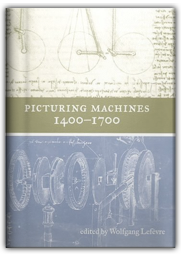
Technical drawings by the architects and engineers of the Renaissance made use of a range of new methods of graphic representation. These drawings — among them Leonardo da Vinci's famous drawings of mechanical devices — have long been studied for their aesthetic qualities and technological ingenuity, but their significance for the architects and engineers themselves is seldom considered. The essays in Picturing Machines 1400-1700take this alternate perspective and look at how drawing shaped the practice of early modern engineering. They do so through detailed investigations of specific images, looking at over 100 that range from sketches to perspective views to thoroughly constructed projections. |

My Library
Collection Total:
1165 Items
1165 Items
Last Updated:
Sep 9, 2009
Sep 9, 2009

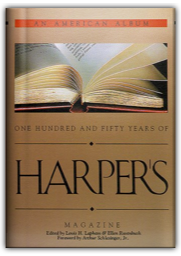

 Made with Delicious Library
Made with Delicious Library